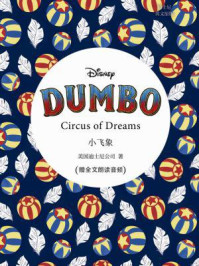





The cough ( Ké Sòu ) is one of the most common lung system disorders in pediatrics. Ké refers to the coughing sound,while Sòu refers to phlegm,so Ké Sòu involves sound and phlegm.The cough may occur all year round but is more common in winter and spring.The prognosis is generally favorable,but some may recur and last a long time.All kinds of acute and chronic diseases caused by external contraction or internal damage can cause a cough,and tracheitis and bronchitis in western medicine can be differentiated and treated with reference to a cough.
The etiology of a childhood cough falls into external contraction and internal damage factors.The common causes include the invasion of external pathogens,generation of phlegm,lung qi deficiency,and lung-yin insufficiency.The pathological location is mainly in the lung; the pathomechanism is impaired lung dispersing and descending leading to lung qi ascending counterflow.
Wind is the chief pathogen of all diseases.Children are susceptible to invasion by wind pathogens due to their delicate skin and muscles,and poor ability to adjust to the cold and warm,so exogenous cough is often caused by cold,heat,dryness and dampness together with wind pathogens.External pathogens invade the lung through the mouth and nose or the skin and hair resulting in lung failure to disperse and descend.Wind is yang-pathogen and transforms into heat quickly.Children have a pure yang body.The cough due to wind-cold in children always lasts for a short time or transforms into heat internally leading to febrile coughing.
“The spleen is the source of phlegm; the lung is the organ for storing phlegm”.Since the infants are insufficient in the spleen qi,improper feeding and nursing may injure the normal transforming and transporting functions of the spleen,leading to retention of dampness which is further coagulated into phlegm.The accumulation of phlegm in the lung will obstruct respiratory tract and stagnate the pulmonary qi,consequently causing cough.Since the infantile lung is delicate and subject to external pathogens,the lung fails to disperse the body fluid which accumulates into phlegm.It says in Plain Questions ( Sù Wèn ,素问) that disorder of all zang-fu organs may cause a cough besides the lung.For example,liver fire exuberance or wood generating fire will produce phlegm accumulated in the lung which may lead to a cough.
The lung of infants is often insufficiency,and prolonged cough impairs healthy qi and the lung,which results in a persistent weak cough,shortness of breath,and spontaneous perspiration.
The lung is delicate and weak in children.If an exogenous cough persists,the deficiency of healthy qi leads to lingering pathogens and the heat that will scorch and damage the lung fluids.Yin deficiency may generate interior heat or dryness which impairs the lung collaterals,manifesting as a persistent dry cough and a hoarse voice.
a.History Often occurs in winter and spring,usually induced by climatic changes;often with a common cold before the onset of a cough.
b.Manifestations Cough is the main symptom.Lung auscultation reveals harsh breathing sounds,dry rales or coarse moist rales.
c.Auxiliary examination
Blood examination: normal or reduced white blood cell counts in cases of viral infection; increased white blood cell and neutrophil counts in cases of bacterial infection.
X-ray examination: normal or with increased lung markings and a widened hilar shadow.
Bacterial culture,viral isolation,and pneumonia mycoplasma examinations can obtain the corresponding etiological diagnosis.
The cough should be differentiated from pneumonia and asthma.(See Table 6–1)
a.Differentiating External contraction or internal damage
A cough due to external contraction typically has an acute onset and a short duration,and is accompanied by exterior symptoms such as fever and nasal congestion with discharge; a cough due to internal damage has a typical chronic onset and a long duration and is accompanied by different degrees of dysfunction of zang-fu organs.
b.Differentiating Cold or Heat and Deficiency or Excess
It should be differentiated according to the coughing sounds,expectoration characteristics,and coughing time.
Coughing sounds A loud and strong cough belongs to excess pattern; a low and weak cough belongs to deficiency pattern; a heavy cough with an itchy throat belongs to a wind-cold cough; a rough cough with a hoarse sound belongs to a wind-heat cough;a cough with phlegm and rumbling in the throat belongs to a phlegm-damp cough; a hoarse cough with qi rushing up belongs to a dryness-heat cough; a hoarse cough with short breath and low voice belongs to lungyin deficiency.
Expectoration characteristics Cough with easy expectoration of white thin phlegm is mostly due to wind-cold or phlegm-dampness; a cough with yellow thick sputum due to wind-heat or phlegm-heat; a cough with little but sticky sputum due to dryness-heat or yin deficiency.
Time and rhythm Cough serious in the day and light in the night is external contraction cough; a cough occurring in the morning,intensifying spasmodically and reducing with expectoration belongs to a phlegm-heat cough; a cough aggravating in the afternoon or cough at night mostly belongs to lung dryness and yin deficiency.
The main treatment principle for a cough is focused on the lung by facilitating lung and relieving cough,taking the theory of eliminating excess with dispersing medicinals.For cases of qi regurgitating,it is to diffuse and descend lung qi.For external contraction cough,dispelling wind to resolve exterior should be added; a cough due to internal damage should be treated with eliminating dampness,or clearing heat and resolving dampness,or nourishing yin to moisturize lung.
◆ Wind-cold cough
Signs and Symptoms: a frequent cough,thin white sputum,heavy voice,itchy throat,clear nasal discharge,or aversion to cold without sweating,headache,aching body,thin white coating,and floating and tight pulse.
Essentials: a cough with thin white sputum,clear nasal discharge,thin white coating,and floating and tight pulse.
Treatment Principles: Disperse wind and dissipate cold,diffuse the lung and relieve a cough.
Formula: Modified Xìng Sū Săn (Apricot Kernel and Perilla Powder,杏苏散) from Systematic Differentiation of Warm Diseases ( Wēn Bìng Tiáo Biàn ,温病条辨).
Associated Formula: Modified Zhǐ Sòu Săn (Cough-Stopping Powder,止嗽散) from Medical Revelations ( Yī Xué Xīn Wù ,医学心悟).
Medicinals: kǔ xìng rén (Semen Armeniacae Amarum), zǐ sū yè (Perillae Folium), qián hú (Radix Peucedani), bàn xià (Rhizoma Pinelliae), jié gěng (Radix Platycodonis), chén pí (Pericarpium Citri Reticulatae), fú líng (Poria), zhǐ qiào (Fructus Aurantii), gān căo (Radix et Rhizoma Glycyrrhizae), shēng jiāng (Rhizoma Zingiberis Recens),and dà zăo (Fructus Jujubae).
Modifications: For severe external cold,add jīng jiè (Herba Schizonepetae), fáng fēng (Radix Saposhnikoviae) and má huáng (Herba Ephedrae); for profuse thin phlegm,add xuán fù huā (Flos Inulae) and zǐ sū zǐ (Fructus Perillae); for cases of pain and swollen throat with a hoarse voice,red tongue,and wind-cold transforming to heat,add yú xīng căo (Herba Houttuyniae), huáng qín (Radix Scutellariae)and pí pa yè (Folium Eriobotryae).
◆ Wind-heat Cough
Signs and Symptoms: a rough cough with thick yellow phlegm that is difficult to expectorate,thick yellow nasal discharge accompanied by fever and thirst,sore throat,red tongue with a thin yellow coating,floating and rapid pulse,purple finger venules.
Essentials: a cough with yellow phlegm difficult to expectorate,thick yellow nasal discharge,red throat,and red tongue.
Treatment Principles: Disperse wind and clear heat,diffuse and descend the lung qi.
Formula: Modified Sāng Jú Yǐn (Mulberry Leaf and Chrysanthemum Beverage,桑菊饮)from Systematic Differentiation of Warm Diseases ( Wēn Bìng Tiáo Biàn ,温病条辨).
Associated Formula: Modified Má Xìng Shí Gān Tāng (Ephedra,Apricot Kernel,Gypsum and Licorice Decoction,麻杏石甘汤) from On Cold Damage and Miscellaneous Diseases ( Shāng Hán Zá Bìng Lùn ,伤寒杂病论).
Medicinals: sāng yè (Folium Mori), jú huā (Flos Chrysanthemi), kǔ xìng rén (Semen Armeniacae Amarum), lián qiáo (Fructus Forsythiae), niú bàng zǐ (Fructus Arctii), bò he (Herba Menthae), qián hú (Radix Peucedani), jié gěng (Radix Platycodonis), gān căo (Radix et Rhizoma Glycyrrhizae),and lú gēn (Rhizoma Phragmitis).
Modifications: For fever,add shēng shí gāo (Gypsum Fibrosum), zhī mǔ (Rhizoma Anemarrhenae) and huáng qín (Radix Scutellariae); for severe cough with profuse phlegm,add dōng guā rén (Semen Benincasae), bèi mǔ (Bulbus Fritillaria) and tíng lì zǐ (Semen Lepidii);for a red and swollen sore throat,add shè gān (Rhizoma Belamcandae), niú bàng zǐ (Fructus Arctii),and xuán shēn (Radix Scrophulariae).
◆ Phlegm-heat Cough
Signs and Symptoms: coughing with profuse thick yellow sputum difficult to expectorate,or accompanied by fever and thirst,restlessness,scant yellow urine,dry stools,red tongue with a yellow greasy coating,slippery and rapid pulse,and purple finger venules.
Essentials: coughing with profuse yellow sputum,red tongue with a yellow greasy coating.
Treatment Principles: Clear heat and purge lung,diffuse and descend the lung qi.
Formula: Modified Qīng Jīn Huà Tán Tāng (Metal-Clearing Phlegm-Resolving Decoction,清金化痰汤) from Purpose of Prescriptions ( Tǒng Zhǐ Fāng ,统旨方).
Associated Formula: Modified Shàng Jiāo Xuān Bì Tāng (Upper-energizer Painful Obstruction Resolving Decoction,上焦宣痹汤) from Systematic Differentiation of Warm Diseases ( Wēn Bìng Tiáo Biàn ,温病条辨).
Medicinals: huáng qín (Radix Scutellariae), zhī zǐ (Fructus Gardeniae), sāng bái pí (Cortex Mori), guā lóu zǐ (Semen Trichosanthis), zhè bèi mǔ (Bulbus Fritillariae Thunbergii), mài dōng (Radix Ophiopogonis), jú hóng (Exocarpium Citri Rubrum), fú líng (Poria), jié gěng (Radix Platycodonis),and gān căo (Radix et Rhizoma Glycyrrhizae).
Modifications: For high fever,add shēng shí gāo (Gypsum Fibrosum),and zhī mǔ (Rhizoma Anemarrhenae); for a cough with profuse phlegm,add yú xīng căo (Houttuyniae Herba), tíng lì zǐ (Lepidii Semen),and xiān zhú lì (Succus Bambusae Recens); for dry and hard stools,add guā lóu (Fructus Trichosanthis), dà huáng (Radix et Rhizoma Rhei) or Yī Niăn Jīn (Children’s Digestion Powder,一捻金).
◆ Phlegm-dampness Cough
Signs and Symptoms: coughing with profuse phlegm,thin and white,rumbling in the throat,chest tightness,poor appetite,fatigue and lassitude,pale tongue with a white and slippery coating,and slippery pulse.
Essentials: coughing with profuse phlegm,thin and white,poor appetite,pale tongue with a white and slippery coating.
Treatment Principles: Eliminate dampness and dissolve phlegm,disperse and discend lung qi.
Formula: Modified Èr Chén Tāng (Two Matured Substances Decoction,二陈汤) from Beneficial Formulas from the Taiping Imperial Pharmacy ( Tài Píng Huì Mín Hé Jì Jú Fāng ,太平惠民和剂局方).
Associated Formula: Modified Xiăo Qīng Lóng Tāng (Minor Green Dragon Decoction,小青龙汤) and Líng Gān Wǔ Wèi Jiāng Xīn Tāng (Decoction of Poria,Licorice Root,Schisandra,Dried Ginger Rhizome and Asarum),both from On Cold Damage and Miscellaneous Diseases ( Shāng Hán Zá Bìng Lùn ,伤寒杂病论).
Medicinals: fú líng (Poria), chén pí (Pericarpium Citri Reticulatae), bàn xià (Rhizoma Pinelliae), lái fú zǐ (Semen Raphani), kǔ xìng rén (Semen Armeniacae Amarum), zǐ sū zǐ (Fructus Perillae), bái jiè zǐ (Semen Sinapis),and gān căo (Radix et Rhizoma Glycyrrhizae).
Modifications: For chest tightness and difficult expectoration,add zhǐ qiào (Fructus Aurantii) and jié gěng (Radix Platycodonis);for severe cold-dampness,thin and white phlegm,and white slippery coating,add gān jiāng (Rhizoma Zingiberis) and xì xīn (Radix et Rhizoma Asari); for poor appetite,add bái zhú (Rhizoma Atractylodis Macrocephalae)and shén qū (Massa Medicata Fermentata).
◆ Yin-deficiency Cough
Signs and Symptoms: prolonged dry cough with scanty phlegm,or a cough with sticky phlegm difficult to expectorate,dry mouth and throat,hoarseness,hot palms and soles,tidal fever and night sweating,red lips,red tongue with little or peeling coating,thready and rapid pulse,and pale purple finger venules.
Essentials: prolonged dry cough with scanty phlegm,red tongue with little or peeling coating,and thready and rapid pulse.
Treatment Principles: Nourish yin and moisten lung,resolve phlegm for relieving cough.
Formula: Modified Shā Shēn Mài Dōng Tāng (Radix Glehniae and Radix Ophiopogonis Decoction,沙参麦冬汤) from Systematic Differentiation of Warm Diseases ( Wēn Bìng Tiáo Biàn ,温病条辨).
Associated Formula: Modified Qīng Zào Jiù Fèi Tāng (Fire-Clearing Lung-Saving Decoction,清燥救肺汤) from Systematic Differentiation of Warm Diseases ( Wēn Bìng Tiáo Biàn ,温病条辨).
Medicinals: shā shēn (Adenophorae seu Radix Glehniae), mài dōng (Radix Ophiopogonis), huáng jīng (Polygonati Rhizoma), yù zhú (Rhizoma Polygonati Odorati), sāng yè (Folium Mori), bái biăn dòu (Semen Lablab Album), tiān huā fěn (Radix Trichosanthis), zǐ wăn (Radix et Rhizoma Asteris), kuăn dōng huā (Flos Farfarae),and pí pa yè (Folium Eriobotryae).
Modifications: For lower but persistent fever,add qīng hāo (Herba Artemisiae Annuae), dì gǔ pí (Cortex Lycii) and hú huáng lián (Rhizoma Picrorhizae); for prolonged cough with thick greasy phlegm,add mài dōng (Radix Ophiopogonis) combined with Xiè Bái Săn (White-Draining Powder); for cough with blood-streaked phlegm,add bái máo gēn (Rhizoma Imperatae) and oǔ jié (Nodus Nelumbinis Rhizomatis).
◆ Chinese Patent Medicines
1. Xìng Sū Zhǐ Ké Kē Lì (Apricot Kernel and Perilla Leaf Cough-Relieving Granule,杏苏止咳颗粒) for wind-cold type coughs.
2. Jí Zhī Táng Jiāng (Acute Bronchitis Syrup,急支糖浆) for wind-heat type coughs.
3. Fèi Lì Ké Hé Jì (Cough-Relieving Mixture,肺力咳合剂) for phlegm-heat type coughs.
4. Jú Hóng Wán (Red Tangerine Peel Pill,橘红丸) for phlegm-dampness type coughs.
5. Mì Liàn Chuān Bèi Pí Pa Gāo (Honey Refined Sichuan Fritillaria Bulb and Loquat Cream,蜜炼川贝枇杷膏) for yin-deficiency type coughs.
◆ Tuina Therapy
Open Tianmen by pushing BL 2 ( cuán zhú )with the two thumbs 20 times; clear spleen meridian and lung meridian with thumbs 100 times; rest the thumbs on either palm of the infant and apply circle strokes,working on the spot nèi bā guà ,for one minute respectively; apply clockwise rotation and kneading with the middle finger on RN 22 ( tiān tū ) and RN 17 ( dàn zhōng ) one minute respectively;press DU 14 ( dà zhuī ) and BL 13 ( fèi shù ) two minutes respectively.The method is repeated twice a time,twice a day.
◆ Application Therapy
Grind bái jiè zǐ (Semen Sinapis), yán hú suǒ (Rhizoma Corydalis), gān suì (Radix Kansui) and xì xīn (Radix et Rhizoma Asari)into the fine powder,and make the paste by adding ginger juice.Apply the paste to BL 13 ( fèi shù ),BL 15 ( xīn shù ),BL 17 ( gé shù ) and RN 17 ( dàn zhōng ).Treat once or twice a day,5–10 minutes a time,5 days as one course of treatment.
1.To improve the living environment,maintain the air circulation,pay attention to climate change,and prevent colds.
2.Avoid throat irritation,such as excessive crying,shouting,and smoke and fume stimulation,etc.
3.Avoid raw and cold fruits or very spicy,sweet and salty foods.
4.Pick up the infant,pat the back with an empty palm,from bottom to top,on left and right respectively.It can promote sputum discharge.


